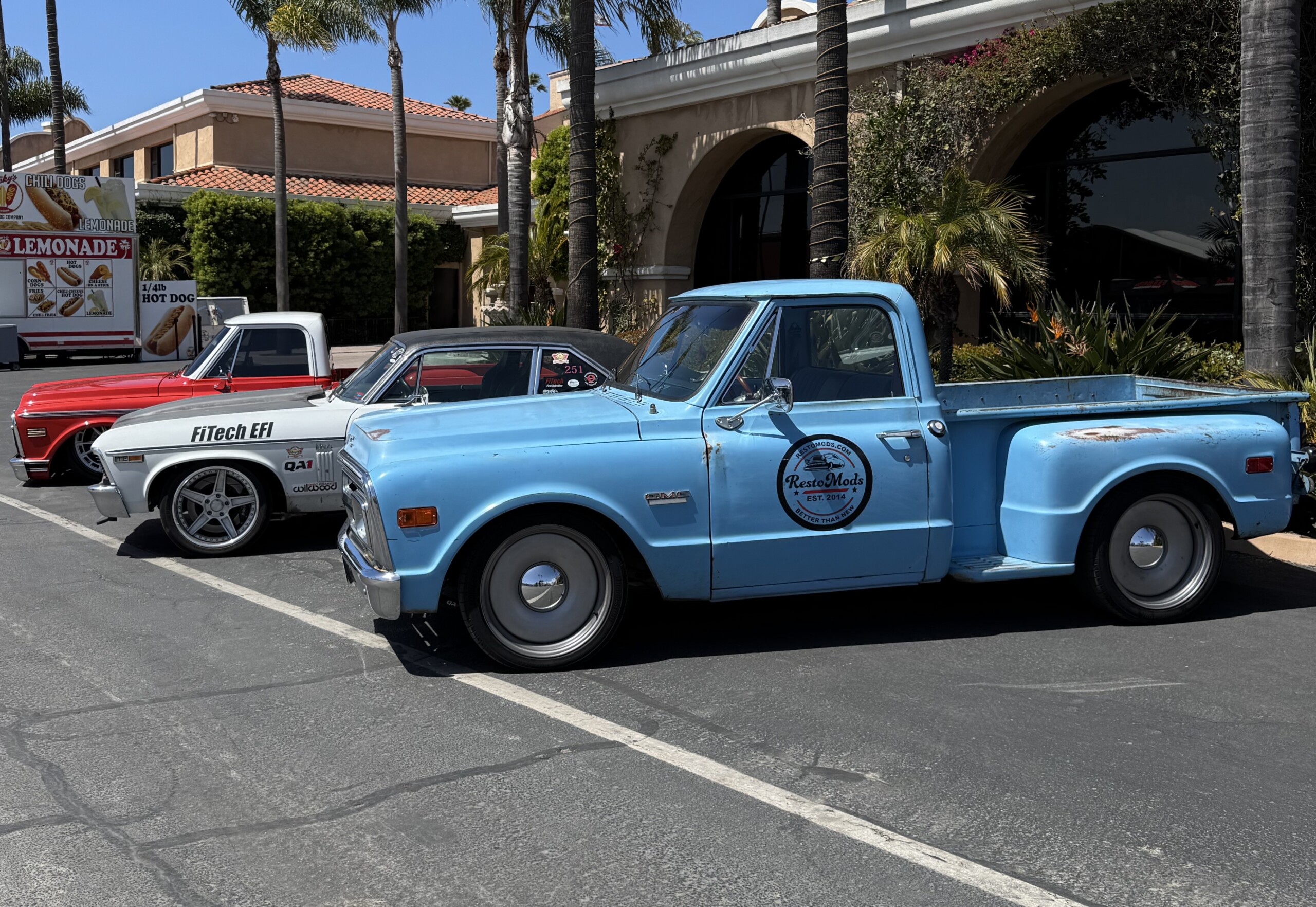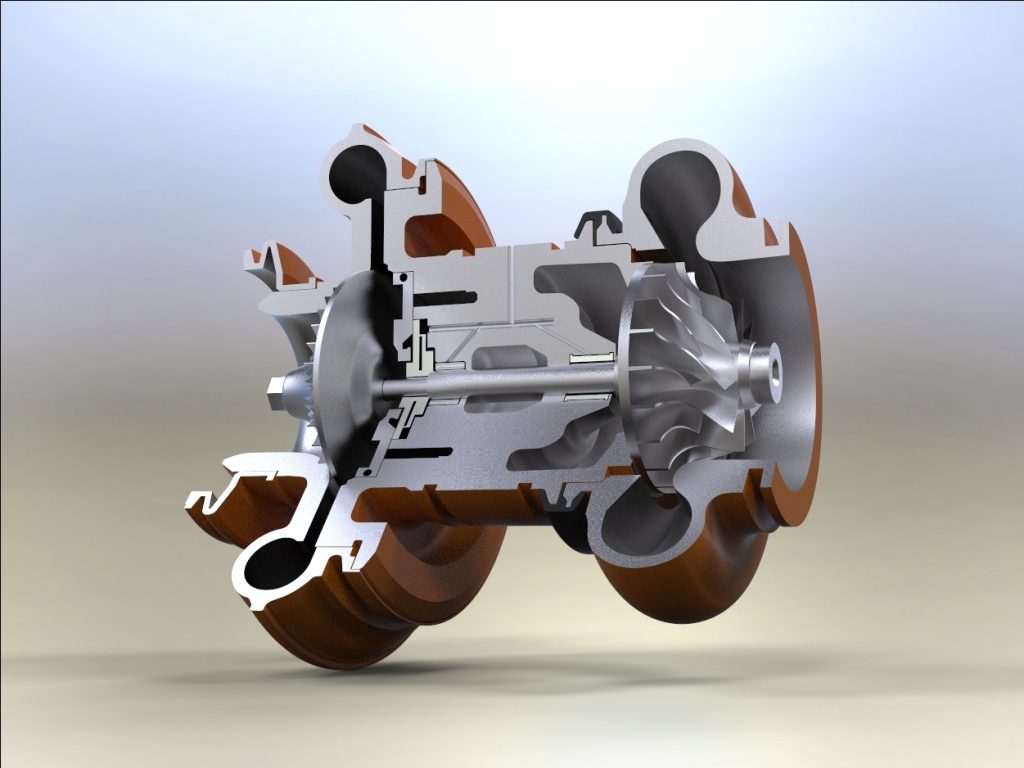Forced Induction for Dummies 2: Turbo Power
We’ve already discussed what forced induction is. Basically, what we’re trying to do is stuff a lot more air and fuel into the combustion chamber than is usually there. When there is more fuel and air, there is a bigger explosion in the chamber. Bigger explosions mean more power.
Well, that’s that basic gist, anyway…
Turbo:
Now that we’ve gotten the “what” out of the way, let’s take a look at the “how” by looking at some of the different forced induction setups.
Let me start by saying that this isn’t the end all be all turbo list. Rather, this is a general guide to help the layman understand the basics of how a turbo works, and to figure out if this is the route you should take on your journey to melting your tires to the pavement.
Photo Credit: Ebay
First, let me say that I’m starting here because I know more about turbo setups than I do about superchargers. The reason why is because I’ve actually owned turbo cars before. When I was in the Marine Corps., I had the pleasure of living in Japan for a year. I owned a turbocharged six cylinder Nissan Skyline.
If you’ve ever seen any of the Fast and Furious movies, you’ve likely seen a Nissan Skyline before. Of course, mine didn’t look quite that good, nor was it quite that fast. Nonetheless, when I say the word “Skyline” people in the *know* have to manually remove their chin from the ground.
Why? Because these cars are very hard to get in the US of A, and most people have never even seen one in real life.
Yeah, I’m that cool…
Anyway, the main drawback to that car was that it was super slow off the line. But at a very specific point in the RPM band, it would throw me back into my seat. Here’s why:
Spool –
On their most basic level, turbochargers run off of exhaust gasses. This makes them extremely efficient because they make use of the engine’s waste. However, this efficiency comes at a price: A lag in performance. The reason why there is a lag in power – or why these cars can be slower off the line – is because when the car is at idle, the engine doesn’t produce the amount of exhaust gas required to spin the turbo.
In other words, when you take your foot off the brake and hit the throttle, the exhaust gasses are just starting to flow through the turbo. Every turbo is different, and reaches full power at a different point. But it is usually after the car is already rolling.

Photo Credit: DS Auto Solutions
Makes sense right? However, there are a couple ways to help the turbo get up to speed faster. One way is by adjusting your launch RPMS appropriately in order to allow the required exhaust gases to flow. But, depending on when the turbo spools up, you could be getting a tremendous amount of wheel spin, so you’ll have to practice a lot to get it right.
Another solution, which also doesn’t completely fix the issue at hand, is a twin turbo setup where two smaller turbos are used, as opposed to one ginormous one.
Thus, by putting two smaller sized turbos under the hood, you can still make the same (if not more) power and allow the turbocharger to “spool” up faster because they require less exhaust gas to get going.
As a general rule of thumb, big ones make more high end power while smaller ones make better low end power. Twin turbos help increase the power band in both directions.
Basic mechanics –
The turbo(s) is mounted to the exhaust manifold, with an intake tube connecting to the intake manifold (carb, intercooler or throttle body).
There are two impeller wheels on the inside of a turbocharger. These two wheels are the heart and soul of the turbo system, and basically the whole engine – which becomes evident when one of them gets damaged. If this happens, the engine can run poorly because the exhaust gas flow is being restricted.
Photo Credit: Grab Cad
The most basic way to explain how a turbo works is that exhaust gasses pass through an exhaust port toward one of the wheels. The gasses pass through the chamber where the wheel is housed and as it does, it spins the wheel at a super-fast rate.
The exhaust wheel (turbine) is attached to the other one on the intake side (compressor), which is also caused to spin. The only difference is that the intake wheel forces air into the combustion chamber, which is where the power (in the form of compressed air) comes from.
Hot Air:
Compressed air gets really hot. You may know this already, but colder air helps your engine perform better because it is more dense. You want the air that enters your engine to be as cool as possible before it goes into the engine so it can perform.
This is one of the reasons gear heads have had to come up with some interesting ways to cool this air down. One such way is an intercooler. This radiator-like component uses a series of pipes and outside air to cool down the compressed air before it makes it into your engine.
Another, more recent method of cooling down the air, is to mount the turbo under the car (by the rear wheels) and allow it to travel up to the engine. In theory, the outside air helps to cool down the compressed air in the tube as it travels toward the engine. In my opinion, unfounded as it may be, this system wouldn’t work as well as having an intercooler.
Lastly, some guys opt to just let the compressed air into the engine as hot as it was when it left the turbo. There are many reasons for this, to include cost efficiency and weight reduction.
Fuel injection or Carb:
It is more popular, not to mention a whole lot easier, to just put a turbo on a car already equipped with fuel injection. This does not mean that you can’t put a turbo on a carbureted car. Believe it when I say that here are plenty of them out there. But you can’t just go out and buy any ol’ carb thinking that you can slap a turbo onto it.
It isn’t quite that easy. You need to make sure you have the right type of carburetor for a turbo setup. And even then, setting it up properly can be difficult. This topic is beyond the scope of this blog post, but if you’re thinking about going this route, a good place to start would be by researching “blow through” carbs.
Next time, we’ll dive right into the wonderful world of superchargers. But, with all the different types out there, we may need to split it up a bit.
Recent Posts
-

How Much Money Does It Cost To Build A RestoMod?
September 25, 2025Building a Restomod: Time, Money + Skill Restomods—classic cars upgraded with modern performance, comfort, and safety—are one of the hottest trends in automotive culture.…Read more -

Classic Muscle and Restomod Car Shows Across The US
September 23, 2025From the sun-drenched coasts of California to the historic byways of New England, the United States hosts a variety of classic car shows, offering something…Read more -

Reegan Is Building This 1975 Dodge Ramcharger For One Lucky YouTube Subscriber
August 13, 2025Update 9/18/25: The team is now focusing on getting as much wiring done as possible all throughout the truck. Here you can see Miguel working…Read more
Become a Car Club Member
Car Club Members Get Entries to Win, Discounts in our Shop, Discounts with our Preferred Partners and more!
Membership benefits
By joining the RestoMods Car Club Today, you will receive amazing perks plus 15 bonus entries into our sweepstakes for every month you are an active member
-
Auto Discounts:Curated Discounts From Your Favorite Parts Companies
-
Restomods Monthly:Monthly Magazine With The Latest Industry News
-
Classified Ads:Get Free Postings seen by 300,000 enthusiasts monthly
-
Car Show Tickets:Check out the biggest vintage car shows on us.
-
Exclusive Car Deals:First chance to purchase any prize cars not selected






Restomods on Instagram
Follow us on Instagram and other networks














